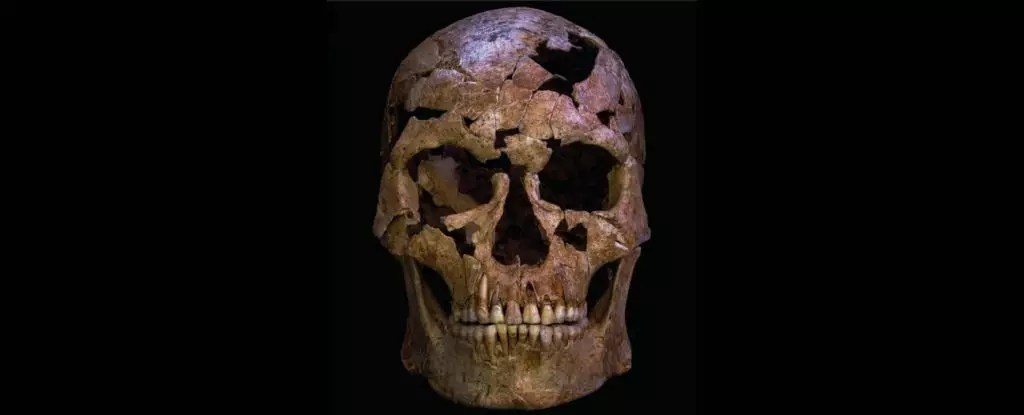The discovery of ancient bones entangles us in a haunting narrative—one that starkly contrasts the often sentimental view of early humans as innocent or purely survival-driven beings. Instead, the archaeological findings from Vietnam reveal a disturbing truth: violence and interpersonal conflict have deep roots in our history. This is not merely an isolated incident but a revealing chapter that forces us to confront the uncomfortable reality of humanity’s propensity for cruelty. It’s a stark reminder that violence is embedded within our biological and social fabric, challenging romanticized notions of primitive innocence and highlighting moral complexities that persist to this day.
Unraveling the Mystery: Evidence of a Prehistoric Homicide
The bones, dating back approximately 12,000 years, belong to a man around 35 years old who seemingly lived in good health, yet met a violent and untimely end. The crushing injury to his skull appears to be a post-mortem trauma, but the key indicators of foul play lie elsewhere. An astonishing detail is the presence of a quartz projectile lodged in his neck—an anomaly considering the region’s artifact profile. The stone’s origin was distant from the site, suggesting a complex network of resource exchange or conflict involving distant groups. Coupled with the fractured cervical rib, these clues paint a vivid picture: the man was likely struck by a projectile during a violent encounter, resulting in personal injury that led to infection and eventual death.
What is most revealing in this case is the evidence of intentional violence—an act carried out with a purpose, a lethal fallout from what might have been territorial disputes, social tensions, or even early forms of interpersonal revenge. The trauma and subsequent infection demonstrate not just a moment of aggression but a consequence of deliberate harm—an early testament to human capacity for homicide.
Implications for Understanding Social Dynamics in Ancient Societies
Confronting this evidence forces us to rethink the narrative of ancient social life. The conventional image of early humans as fragile survivors huddled in small bands fighting only to sustain life is incomplete at best. The presence of violence, especially lethal violence, indicates complex social dynamics—power struggles, conflicts over resources, or personal vendettas—existed millennia before the advent of written history or organized states.
Moreover, the deliberate use and import of foreign stone tools suggest interactions—whether hostile or otherwise—across regions. Such exchanges imply a degree of social complexity that includes conflict, territorial boundaries, and perhaps even social stratification. This evidence undermines simplistic views portraying early humans as uniformly cooperative and instead presents a more nuanced picture: that violence has been an intrinsic part of human interaction from very early on.
The Moral Quandary of Humanity’s Violent Heritage
Recognizing violence as a core component of our history is uncomfortable, yet unavoidable. It raises profound ethical questions about human nature—whether violence is an innate trait or a product of social and environmental pressures. From a political perspective rooted in centrist liberal values, acknowledging our violent past does not imply seeing humans as inherently evil. Instead, it emphasizes the importance of understanding the roots of conflict to foster more compassionate and just societies today.
The discovery challenges utopian narratives of early humans living harmoniously in harmony and highlights the importance of managing social tensions constructively rather than dismissing them as mere remnants of primitive instinct. Our capacity for violence is intertwined with our ability to organize, to innovate, and to shape our societies. Addressing this legacy calls for a balanced approach—recognizing the darker facets of our nature while striving to cultivate empathy, justice, and peace.
Rethinking Our Origins in Light of Human Violence
This archaeological revelation is a powerful reminder that violence is as much a part of human history as cooperation and community. The fact that such acts of interpersonal homicide occurred thousands of years ago indicates that conflict is neither a modern invention nor a sign of moral decline. It is embedded in the human condition, shaped by our biological makeup and the social environments we create.
The challenge lies in how modern society learns from this dark past. Understanding that violence has always been present does not mean accepting it as inevitable; it underscores the importance of social structures, education, and moral frameworks that aim to mitigate conflict and promote understanding. Recognizing our violent heritage should inspire a collective effort to build a future where progress is measured not just by technological advances but also by our ability to manage and reduce violence, to foster reconciliation, and to nurture empathy across boundaries.

